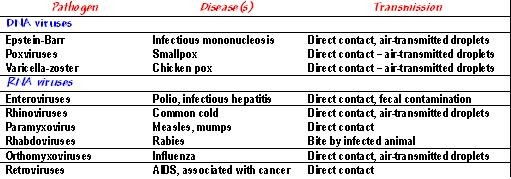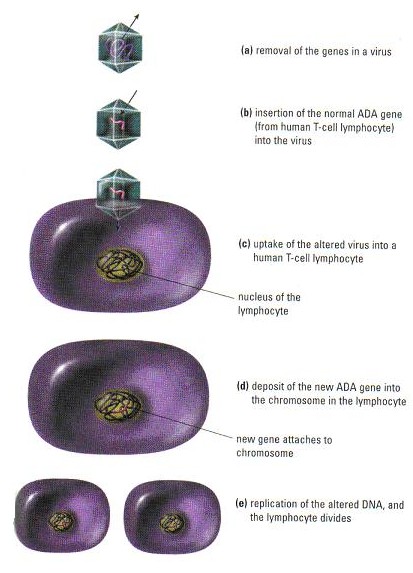General Characteristics
- Do not fit the six-kingdom system because they do not display most of the characteristics of living
 cells. cells. - are selective and in most cases enter only into specific host cells
- have a highly specialized relationship with their hosts meaning they infect only bacteria, only animals, or only plants

Diseases caused by viruses

|
Anatomical and Physiological Characteristics
- Range in size from about 20 to 400 nm in diameter.
- nonliving microscopic particles capable of reproducing only in living cells.
- Consists of a nucleic core (containing either DNA or RNA genetic material) and a protein capsid.

Viral Vectors and Gene Therapy
-
On September 14, 1990, gene therapy was used on a human patient
-
In the early 1980s, scientists successfully transferred genes into mammalian cells by using viral vectors
-
Viral vectors are when the bad genes of the virus are removed and replaced with the genes to be transferred.
-
The vector enters a cell and deposits the new gene in the chromosome of that cell.
-
The gene remains in the cell as long as the cell survives and is passed onto daughter cells
|
